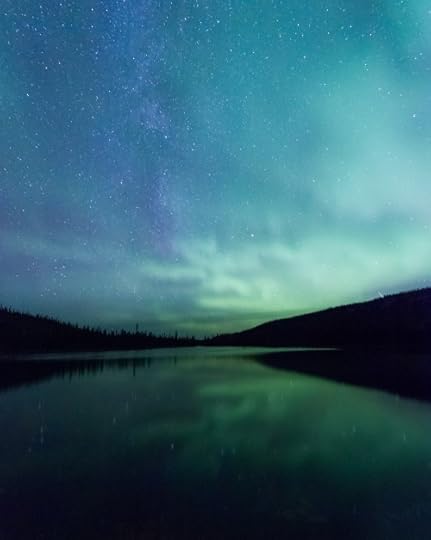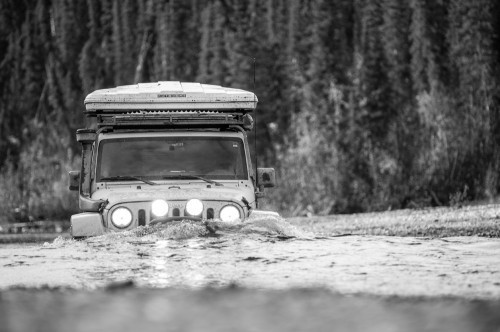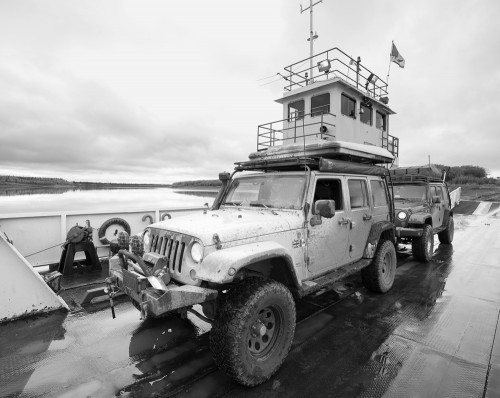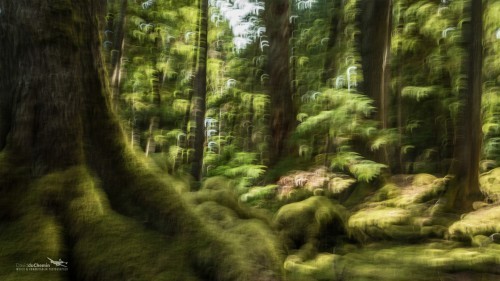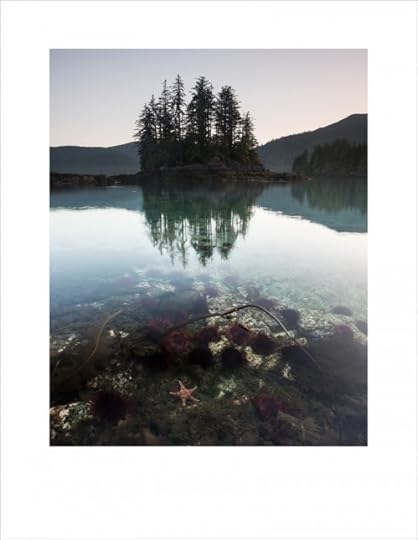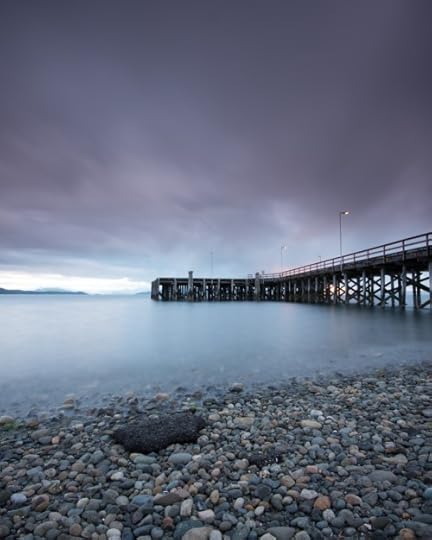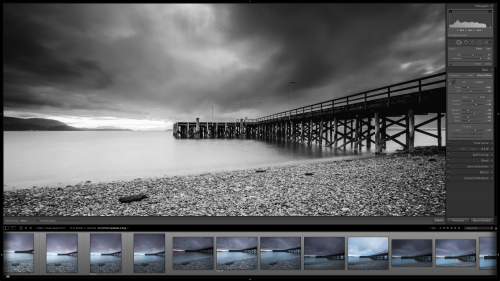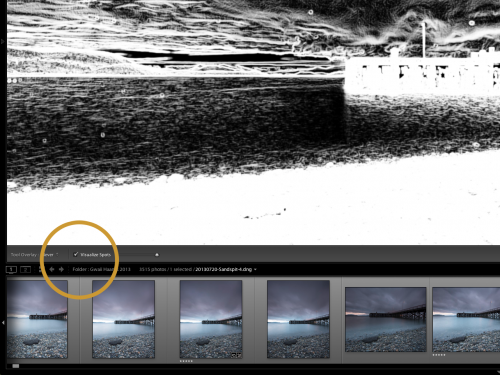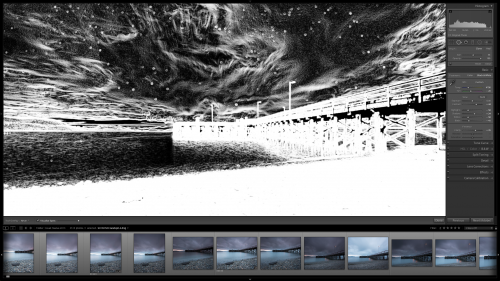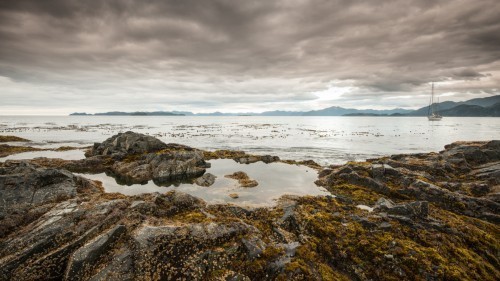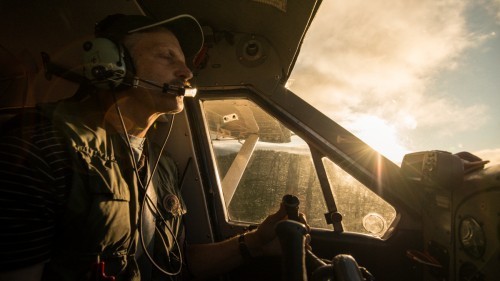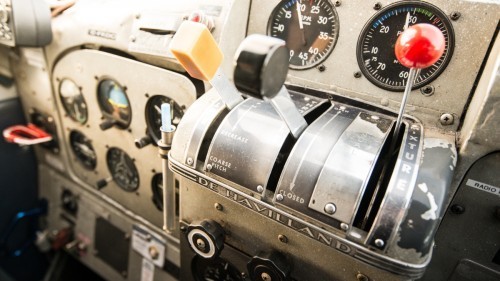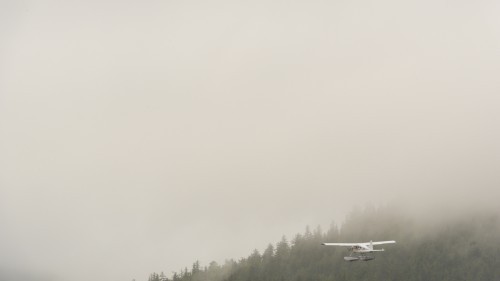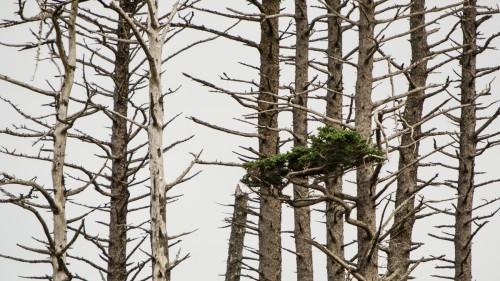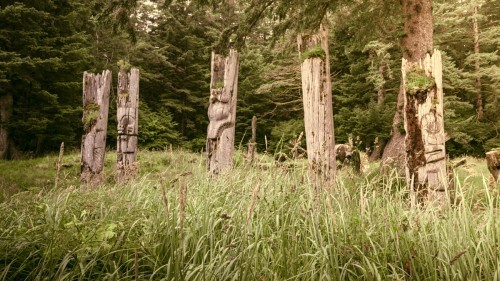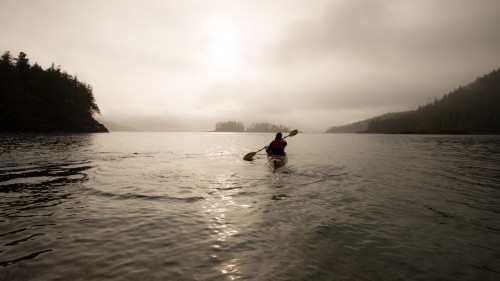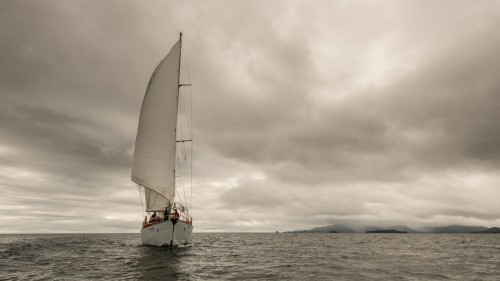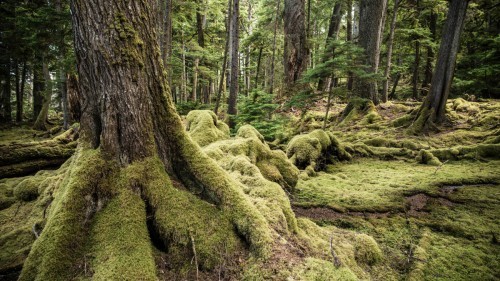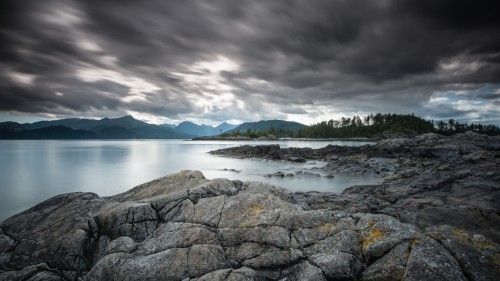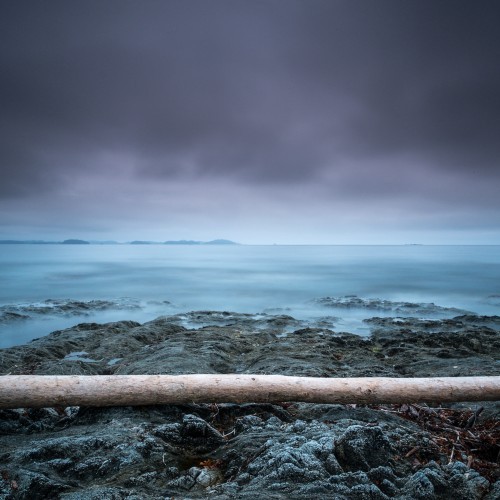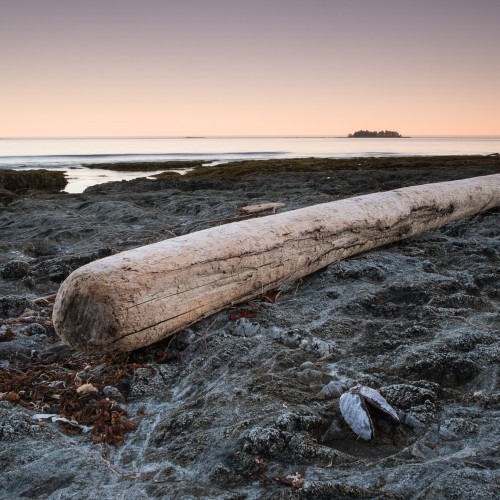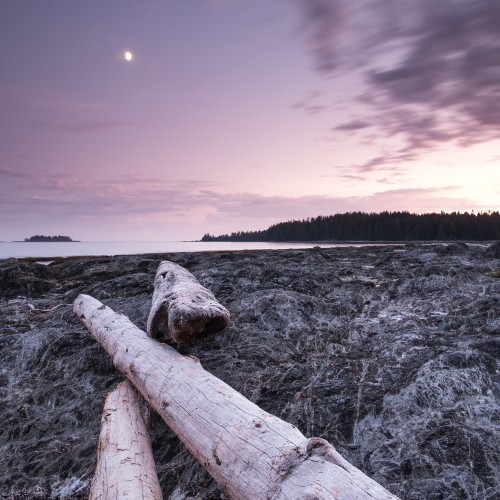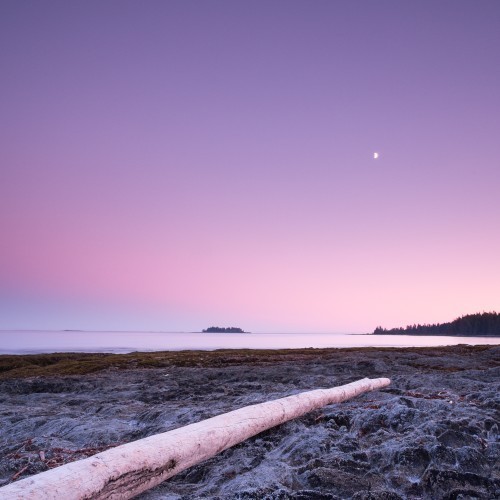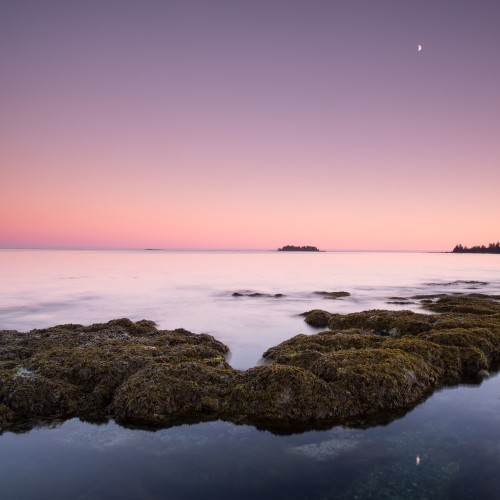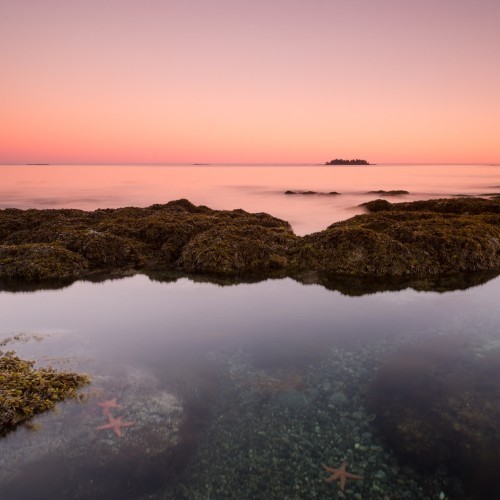David duChemin's Blog, page 34
August 11, 2013
North & Nomadic
Just back from Bali and I’ve got little over a week to service the Jeep, put packing lists together, get groceries, put the gear into Zarges cases and head north. When my nomadic lifestyle was cut too short by a series of circumstances 2 years ago, I mourned the loss of the simplicity I found living out of my Land Rover, feeling close to the elements, and waking up in the wilderness. So once in a while I take some time off to go find that again. Last year it was 3 weeks on a trip north past the arctic circle, and I was so entranced by the fall colours and the northern lights that danced across the sky for the still short northern nights, that this year we’re gone for a month.
In a week we hop into Emily, my Jeep, and head to Jasper, Alberta, then north towards Whitehorse, and from there north on the infamous Dempster Highway to Tombstone Territorial Park and the arctic circle. We’ll chase the colours, look for adventure, and see if we can find the Porcupine Caribou herd and watch them thunder across the landscape. We’ll set alarms, waking up at 1am and 3am to see if the aurora have come to play. We’ll camp in the middle of nowhere, up river beds, and get as far from a cell signal and inbox as we can before we come crawling back “like a drunkard after gin,” as Bruce Cockburn would say. We’ll probably listen to some Bruce Cockburn too, because I can’t drive 9000+ kilometers through Canada without him, and on Monday I’ve got tickets to see him in concert here in Vancouver. I once drove 8 hours to Olympia, Washington to see Bruce in concert, then turned around and drove home. Speaking of heading home, we’ll be coming south again around September 18, taking the BC Ferries’ Northern Explorer through the fabulous Inside Passage, to Vancouver Island, then home. Can’t hardly wait! 
As I did last year I’ll share the adventure with you as much as I can. While I’m gone we’ll be releasing something I wish I could be here to do myself. Earlier this summer I finished a book called The Visual ToolBox, 50 Lessons for Stronger Photographs, and while I’m on the road my team here will release it. I love teaching photography, and since I don’t have a school, this book is my best shot at that. It’s a big book, released digitally as a PDF through Craft & Vision, and I wrote it as though it were year one in a weekly photography school for people who want to do more than make photographs that are sharp and well exposed, and make photographs, instead, that say something, and move people. Can’t wait to show it to you! Stay tuned; there will be a special discount for the first couple days of its release.
August 7, 2013
PHOTOGRAPH, Issue 4

Well, somehow we did it. A year after we released the first issue of PHOTOGRAPH, we’re releasing issue four, completing our first year. We’ve got a growing number of subscribers and more and more amazing photographers that want to be a part of something different like this. Thanks so much for being part of it, for reading, making suggestions, and for sharing this with others.
Today Issue 4 of PHOTOGRAPH gets released to you, and with it the commercial work of Nick Hall, the beautiful abstracts of Kathy Beal, and the stunning work of Sam Krisch who blew me away with his work on our first trip to Antarctica. Articles include all the usual great columnists, a feature article about the Zone system for digital photographers, my Without the Camera article on Learning to See, and a great article on the use of space in composition from John Paul Caponigro. As always, it’s large, beautiful, and ad-free.
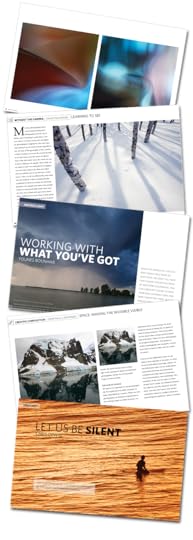
Subscribers will get their emails today with the download link (check those spam filters before you worry we’ve missed you). Everyone else… choose your own adventure below:
BUY ISSUE FOUR (USD $8) 
Download the latest issue.
SUBSCRIBE FOR ONE YEAR (USD $24) 
Download the latest issue and get the next three issues delivered to your inbox and save USD $8.
BUY THE FIRST FOUR ISSUES AND SAVE (USD $24) 
Download Issues One, Two, Three, and Four! Get the Year One Collection of PHOTOGRAPH and save USD $8.
Got a question about buying or downloading a Craft & Vision product? Email the team at support@craftandvision.com – they’ll help you a lot faster than leaving a comment here.
August 5, 2013
Winning at Yoga
One of the best things most of us can do right now is stop asking so many people what they think of our art, whether that’s photography or not. Art is not a democracy, it’s a way of sounding your voice and when you allow others – especially unknown or anonymous others – to determine the direction of that art, you’re allowing it to be diluted. Yes, learn about your art and your craft from people you respect, but that will only take you so far before you stand at the edge of the place where art is done alone, without the input or concensus of others, and you leap.
There’s an unfortunate thing happening online these days. A photographer finds some commercial success, which is sometimes, but not always, an indication that their art is good. They teach some courses and a growing number of younger photographers learn what they can. And then people begin not to adapt the things they’ve learned, which is good, but to adopt them wholesale: to replicate. Soon a forum is started so these adopters can critique the work of each other and – forgive me for being a little too blunt – they all drag each other into homogeny and mediocrity. Looking to these teachers and forums is the surest way to dilute your own voice, or to ensure you never hear it. Art is created as a result of a journey inward, not when a certain amount of people “like” your work.
We flock to these places, and they’re different for all of us, because they are safe places. They allow us to think we’re making progress, and to be fair, sometimes, early on, there are things to be learned. But more than that I think we go there because we see a chance to for our ego to get a hit of approval, or a “nice capture,” which seems to be the drug of choice among new photographers right now. Art is a solitary thing. We do the best of it alone because it’s there where things are quiet enough and the other voices silenced enough that we can do our thing, wrestle through our process, fall down a few times, and create something authentic. Something that’s ours alone without being pulled to the middle by opposing voices.
Art takes courage. It takes courage to find our vision, and the voice to express it. Having a few people around, trusted voices from people who create work we respect, can help. But even those voices don’t know what’s inside you. They have no idea what you long to say, what things are bursting to get out. It takes courage to pull away from sources that tell you, “ do it this way” and to find your own way. It takes courage to step away from the atta-boys and the nice captures, none of which mean a thing, no matter how sincere the source.
Art is not a democracy. Photography has been said to be the most democratic of the arts, but that refers to access, not to what we create. Your work requires no votes to be authentic. It requires no endorsement. And it just might be that all those votes and endorsements are standing in the way of discovering our best work. It’s why I will not longer judge a photography competition, or enter one. I agree, you can learn something from competing. Maybe. But I don’t think the potential gains outweigh the loss. The idea that you can win at art is, as a friend recently said so well, as absurd as the idea that you can win at yoga. We trust the judges and arbitrars of taste so much all we can do is second-guess ourselves.
Art is about us listening to your voice, hearing what you have to say, look at what you are pointing at, with the medium of your choice. It is not about you listening to us. That’s conversation, and it’s pivotal to relationships, but it’s not this. It’s not art. If you need input, find one or two voices who will listen to you, hear your art, and talk to you about making it stronger. The more sources you try to get this from the more directions you’ll be pulled in, the more difficult it will be to find your own way, and the more likely it is you’ll create art that please no one, least of all yourself.
Don’t be an acolyte. Listen. Learn. And then move on in the direction only you can sense is the most authentic. Follow the fear, lean into it, learn from the failures. Then try again. Sure, it’s a little harder, but by God we don’t need more imitators and more art-by-concensus. We need boldness, authenticity, and the kind of imperfect, flawed, honest art that can only be made when you listen to one voice alone: yours.
August 4, 2013
Greater Intimacy
I believe that when Robert Capa said “if your photographs aren’t good enough, you aren’t close enough,” part of what he implied was more than just physical proximity, but a more intimate knowledge of the subject. They’re connected of course, and if there’s one thing that I love hearing from others about my work, it’s the word “intimacy.” I want people to experience what I experience and I tend to seek more intimate experiences, whether that’s with a person, a landscape, or a bear. In fact some of this is in my brain right now because of my experience with grizzly bears earlier this year, when my guide, Tom Ellison, asked me if it’s possible to translate the intimate encounter we were having with the bears, into photographs, and if so, how come so few people do so. I think it is possible, to some degree, but I think it’s not often done because we chase wildlife with the longest lenses, from the furthest distances, and those lenses don’t often create a very intimate aesthetic.
I think all this is why I love my wider lenses. Sure, a 50-55mm lens more closely resembles how humans see, at least in terms of magnification, but those same lenses don’t remotely touch the way we perceive the world peripherally. We see much wider and I think a wide angle lens pushed in close can give us a greater feeling or intimacy than a longer lens often can, even when it’s just 50mm. There’s no rules here, and I do believe it’s possible to create an intimate photograph with longer lenses, because there is more to intimacy than just how close we are, but for me the wider lenses do something special. Perhaps it’s just forcing me closer. I love the way these lenses subtly (and sometimes not so subtly) enlarge the foreground, allow me to place lines where they have more energy and potential to become compositional elements. They’re harder to work with, for sure, but if I could only use one lens, it’d be wide. On my Nikons I’d go with my 16-35mm zoom, on my Fuji I’d happily live with my 14mm.
Whatever lens you use, the secret to intimacy is love. You have to love your subject, respect it, spend time. Allow yourself to wonder. Let your fascination move you. Someone once said, might have been Ansel Adams, that it was less important to merely take photographs, but to be truly taken by your photographs. I believe photographs are made, not taken, and I think the distinction matters, but I’m willing to overlook it for the sentiment in the quote.  The world has so, so many photographs. The signal to noise ratio is at an all-time low. We don’t need bigger photographs, or sharper ones. We need photographs that move us – that’s when they become more that just the results of our fascination with these little black boxes and become art. That’s when we can say, with the surprise that usually comes with such joy, “I made this!” Until then it’s just something the camera captured, nothing more than waves and particles of light on the film or sensor.
The world has so, so many photographs. The signal to noise ratio is at an all-time low. We don’t need bigger photographs, or sharper ones. We need photographs that move us – that’s when they become more that just the results of our fascination with these little black boxes and become art. That’s when we can say, with the surprise that usually comes with such joy, “I made this!” Until then it’s just something the camera captured, nothing more than waves and particles of light on the film or sensor.
Issue Four of PHOTOGRAPH gets released this week. It’s an excellent issue, and I hope you agree with me that they just keep getting better and better. Thanks for being along for the ride – we’re already working on the next year’s issues and have some great stuff in store. Look for the release of the next issue in the coming days. I’ll be home from Bali on the 9th, so you’ll hear more from me then.
August 1, 2013
August Desktop Wallpaper
One of the most magical forests I’ve ever been too, this forest glade on Ramsay Island in Gwaii Haanas was straight out of a story book. I spent a too-short, but very happy, hour here climbing over moss-covered logs and dodging bear scat, half-expecting to hear the trees speak to me. A slow shutter speed and some intentional camera movement gave it something a little more impressionistic, being, as I was, in a place that first called to me through Emily Carr.
This is a high-resolution desktop wallpaper. Clicking it will take you to the full version. Enjoy.
July 31, 2013
More from Gwaii Haanas
I’m heading to Bali tomorrow but I’ll do my best to drop a line. In the meantime, here’s a few more postcards (didn’t see the first ones? You can find them here), and some shop talk about packing logistics, from last week’s trip to Gwaii Haanas.
Like the Ocean Light II trip to the Khutzeymateen, I was limited in what I could bring because of the strict weight limits imposed (randomly) by the float planes. I left my 300/2.8 at home and focused on putting all my gear, including rain gear, knee pads, and tripod, into my Gura Gear Bataflae backpack. I’ve learned that my best shot at having what I need when I need it, instead of back on the boat, is to have it with me, so it all comes with me on every excursion, no exceptions. Weather changes fast on the ocean, so having rain gear accessible – in my case it’s always the sizeable outside front pockets of the Bataflae, along with lens cloths – is a must. I still insist on two bodies, knowing that changing lenses exposes my sensor to salt spray, and I cringe each time I need to put the teleconverter on. Even still, I needed to sit on my bunk for an hour and do a thorough cleaning of both cameras about half-way through the trip.
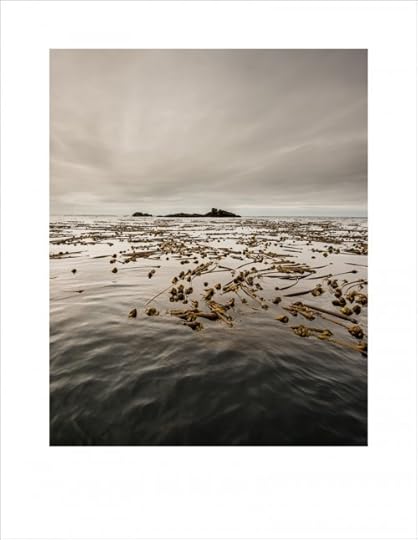
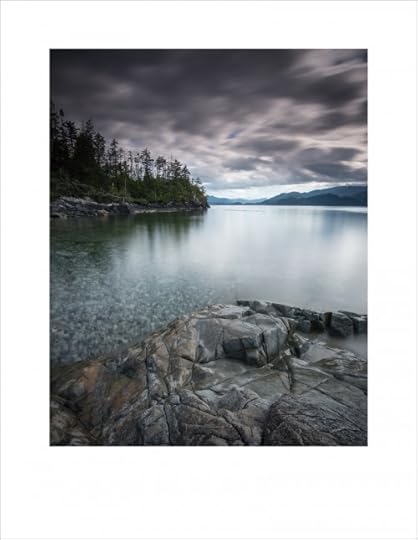
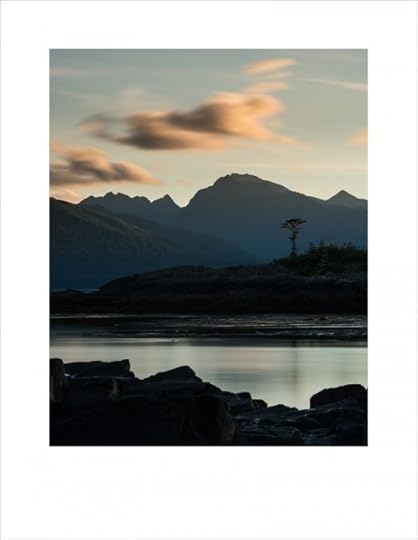
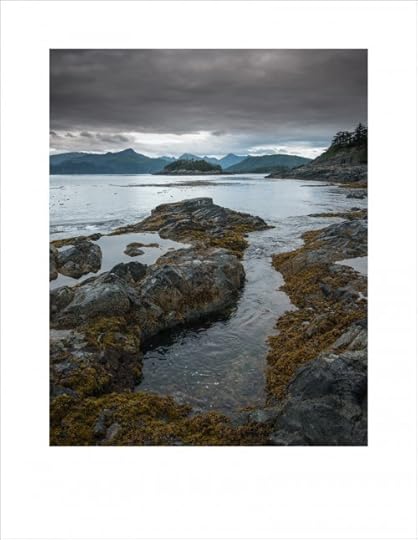
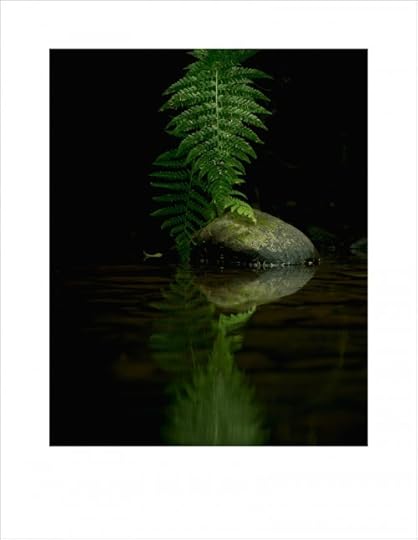
The list looks long but really it’s 2 bodies, 2 lenses, some filters, a tripod and the minimum I needed to stay warm and dry. The rest just doesn’t matter and only weighs me down. Here’s what I took:
Nikon D800
Nikon D3s
16-35/4.0
70-200/2.8
2x Teleconverter
Lee filter holder
3-stop solid ND filter
3-stop grad ND filter
10-stop solid ND filter
Polarizer
2 x Think Tank Photo Hydrophobia rain covers
Gitzo Ocean Traveler
Cleaning kit
Lens cloths
Batteries,chargers, cables
11″ MacBook Air, cables
6 x 64 GB CF / SD cards, card reader
Kindle, iPhone, iPod
Moleskine notebook, pens
Black Diamond knee pads
Patagonia rain pants
Patagonia rain jacket
Icebreaker toque and gloves
2 x Patagonia guide pants
1 x cargo pants
2 x Icebreaker t-shirts
2 x Icebreaker long-sleeve shirts
1 x Icebreaker sweater (thin)
1 x Helly Hansen sweater (heavy)
4x Icebreaker underwear
4x Icebreaker socks
Personal toiletries
MEC down sleeping bag
Travel towel
Water bottle
Black Diamond head lamp
Muck Boot Co. neoprene boots (Style be damned, I love these boots!)
Everything went into thin dry sacks and then into a North Face Base Camp duffle and one of my Gura Gear Bataflaes. My Gura Gear bags have been the world over with me and so far nothing has come close to them for lightness, durability, and comfort when doing this kind of work.
July 30, 2013
Visualizing Spots in LR5
If there’s one feature I love in the newest version of Adobe’s Lightroom, it’s the Visualize Spots tool. There wasn’t much fanfare about it, it kind of snuck under the radar a little, but for me this is huge. Lord knows I try to keep my sensor clean but it’s a losing battle. My usual workflow involves a pretty paranoid search for these little spots but I often don’t get them all until I’ve burned through a couple $20 prints, or worse, put them out into the world only to have someone else point it out. Now we’ve got a little help from Adobe.
In the Develop module choose the Spot Removal tool or hit Q to save some time (Q stands for Quit printing spotty photographs!). Towards the bottom and the left you’ll see a new option in Lightroom 5 – Visualize Spots. Click that. It’ll apply a high-contrast mask and gives you a slider to control how much contrast it applies. With the help of that contrast you’ll see spots you never knew you had. How many spots? Take a look at the last image. Time to break out the cleaning kit and spend a painful 30 minutes making it worse before you give up and just buy a new camera. Man I hate cleaning my sensor! But I’m getting better at it, and most of that is just losing the fear that I’m going to completely screw it up and permanently wreck the camera. The truth is, I haven’t wrecked a sensor yet and for all my bitching it takes way less time to clean the sensor than it did for me to remove the spots on this series of images. If you haven’t played with this new feature yet, go dig around. It’ll save you much time and frustration. It’ll make you want to keep your sensor cleaner too.
July 28, 2013
Gwaii Haanas
A week ago we wound our way out of Sandspit, one of the few small towns in the Haida Gwaii, a group of islands in northern British Columbia that used to be called the Queen Charlotte Islands, towards a waiting bush plane. We loaded our gear into the De Havilland Beaver around 6:30am, the sun already up for a while this far north, and in 30 minutes were touching down beside the Ocean Light II, a 72-foot ketch rigged sailboat. I spent a week with the crew of the Ocean Light II just over a month ago in the Khutzeymateen Inlet photographing grizzly bears in an impossibly green estuary, and got so attached to the boat and my new friends that this felt a little like coming home.
This is Gwaii Haanas National Park Reserve, Gwaii Haanas meaning “place of wonder.” I’ve been dreaming about coming to this part of the world since I first heard of it through the work of painter Emily Carr, and then through the well-publicized fight to save the place, but somehow never found myself here, which is odd because it’s nearly my backyard compared to the places I’ve spent the last 8 years exploring. It’s green here, lush and shaggy, the wind-swept old growth forests of spruce, hemlock, and cedar are thick with moss and lichen, and feel alive like few places I’ve been. Where the forests end, they meet the shores – rocky and strewn with driftwood. There’s a kind of sacred, wild, mess about the place. At the shores, the vibrant intertidals full of urchins, sea stars, anemones, and crabs. Seals, sea lions, otters, whales, all make this place home. To call it a place of wonder is apt but understated.
I’m happy with the work I’ve done here, some of which I’ll share over coming days, but the time’s been too short. And now I’m heading home. The Ocean Light II is motoring its way back towards Sandspit, the motion in my berth at the bow making me want to crawl back into my sleeping bag and fall asleep as I stare out the hatch at the brooding clouds we’ve had all week. I’ve napped often this last week; mornings have been early as our skipper, Tom Ellison, seems to dare me every morning to sleep in and miss the light. He’s a photographer too, and an incurable story-teller. I’d come here just to be in the same room as he. So we rise around 5am, haul our gear into the Zodiac along with our coffee and go see what’s to be seen. We fill our days with exploring, crabbing, fishing, and getting to our next harbour. In between there are visits to old Haida villages to see the few remaining poles and hear the ghosts of the past. Last night I photographed on the beach before returning to the fire and eating grilled salmon and bannock, the sun still working its way down well after 9pm. Small wonder I’m heading home with such reluctance after what seems much more than a week in this timeless and wild place.
When I get home I’ve got 3 days to wash the salt from my clothes, pack my water housing and snorkel gear, charge my batteries, and get on a China Airlines flight to Taipei and then Bali. I’m there for the What If Conference, but have three days before it starts, to find some hammock time and get underwater with my gear. Funny how the direction of my work has changed, how much it pulls me these days towards wild places. I’m still pursuing the humanitarian stuff, and even now planning new work back in northern Kenya in 2015, but the more I do that work the more I see how connected we are as a species, to the welfare of this home we’ve taken too much for granted. In the meantime, so much gratitude for the beauty before my eyes…
July 25, 2013
Essential Development for Lr5
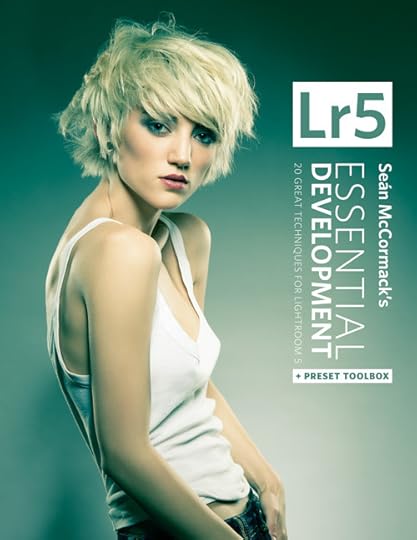
Last October we released Sean McCormack’s Essential Development, 20 Great Techniques for Lightroom 4. It was a meaty book with a tonne of great content and tips. And now that Lightroom 5 is out, Sean’s been working with the elves to update it, and we’re releasing it to the wild today.
Essential Development for Lr5 isn’t a comprehensive look at Lightroom 5, instead it’s a little more like a Greatest Hits album – it looks at some of the more popular, and necessary, skills and techniques that’ll get you more comfortable and capable with Lightroom 5. It’s like sitting down with a buddy who really knows his stuff and crams your brain full of stuff you never knew you could do.
Here’s a run down on the table of contents: Understanding the histogram, Back to Basics, Camera Profiles, Making White White, Beauty Retouching, Dodge and Burn for Beauty, Cross-processing, Achieving a Filmic Look, Image toning, Cropping Inside and Out, Straightening photos, Fixing Skies, Tilt-Shift, Effective Sharpening, Reducing Image Noise, Correcting Lens Issues, Drawing Us In: Vignette, Presets, Fixing More than One Photo, Edit in Photoshop.
And then there’s the presets. Sean’s created a toolbox full of presets – some of which are for style, others of which are to speed the workflow and allow you to see changes at a glance using the preview pane. There’s 100 of them!
Sean’s teaching style is easy-going and accessible, but the man knows his stuff, and if you’re looking to dig under the hood of Lightroom 5 but you’re not ready to sit down and read a manual, this update on Sean’s already great book is an excellent value. Essential Development for Lr5 comes bundled with Sean’s virtual toolbox of 100 presets for USD $7 – but during the launch you can get $1 off (see below).
Learn more on the C&V product page.
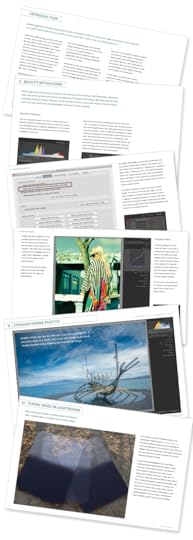
The retail price of Essential Development for Lightroom 5 is USD $7 but use the promotional code EDLR5 when you check out and pay only USD $6 OR use the code ED20 to get 20% off when you buy 5+ products from the Craft & Vision collection. These codes expire at 11:59 PM (PST) July 31, 2013.
July 19, 2013
The Power of Constraint
I spent the last 4 days on Vancouver Island on a beach near Ucluelet. Gorgeous. Passing whales. Beer. Hammock. Silence. My girl and a couple dear friends. Some beautiful light too, and though I didn’t go to make photographs I did take an hour each evening to play.
We just finished the inaugural The Created Image seminar here in Vancouver ( and we’re already planning for 2014. Want to be notified when details come available? Give us your name and email address here and you’ll be the first to know). We hosted 30 photographers who wanted to spend a couple days having their brains crammed to bustin’ with teaching about creativity, composition, visual language, editing, and a bunch of unplanned little digressions from me. One of the things I talked about, and this comes as no surprise to anyone who’s been caught in the middle of one of my sermons about creativity, is the power of constraints.
We need constraints. They force our hands creatively, and while many advocate embracing constraints, I suggest we go one better and create them. So while I was in Ucluelet I found a stretch of rocky beach just feet from my tent and imposed a constraint, and for three evenings I made images that had to have one of two sets of logs and/or the small distant island as a compositional element. Nothing else. These constraints gave me the field in which to play and, un-paralyzed by the vast choices I might otherwise have had, I got down to business. I’m not sure if these images are much more than sketches at this point, but I sure enjoyed myself and came away with some new ideas. The next time you’re out with your camera, consider creating some constraints and see if it doesn’t propel you forward more than it holds you back.
Tomorrow it’s a flight to Sandspit on Haida Gwaii, then a float plane back to the Ocean Light II on which I spent a week last month in the Khutzeymateen. I’ll be gone for a week, absorbed in the seastars, wind, orcas, and light of northern British Columbia. Then not long after that it’s a week+ in Bali for the What If Conference, and not long after that a month in the Jeep back up towards the arctic to see the colours turn and the northern lights dance. Busy time but it means a return to field work and the wild places I love. I’ll check in as often as I can, I promise.

